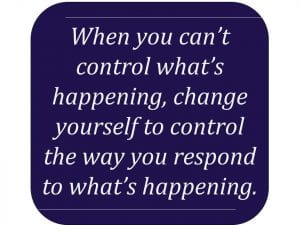As the end of the year dwindles down, I’m witnessing and experiencing the typical May “chaos.” Students are full of renewed, and perhaps irritating, energy. Teachers are lacking renewed energy, and in fact are short on energy, patience, and tolerance.
Last May, I wrote about rethinking the end-of year countdown. My reflections in that post included the importance of considering maintaining structure and routine at the end of the year through systematic and explicit instruction. My focus then was on academic instruction; I would now add to that the importance of systematic and explicit instruction around behavior, as well. Of course we know that type of instruction is important throughout the year. Considering the uptick in undesirable behaviors in May, this is the perfect time to double-down on our efforts to be very clear in our expectations. After all, as Solution Tree consultant Mike Mattos reminds us:

Throughout this past week, I’ve heard about several suspensions and expulsions that have been doled out in our district (pretty certain it’s not unique to us!). I’ve only heard that they have happened. I know nothing about the circumstances that led up to the decisions to suspend or expel. I’m not trying to pretend that I’ve got it all figured out, and I’m not saying that the consequences weren’t warranted. I do take pause, though, as I read Eyes are Never Quiet, by Dr. Lori Desautels and Michael McKnight. They remind us: “These young people are in persistent state of alarm and are in pain. What schools have viewed as their most difficult discipline problems are children and youth demonstrating externalized or internalized pain-based behaviors. Pain-based behaviors look like disrespect, disengagement, disobedience, willfulness, moodiness, excessive anger, not being able to sit still, and a whole host of behaviors that are ‘punished’ in our schools.”
And that’s only referring to those students who have experienced trauma. What about those students who are fortunate enough to have zero exposure to trauma? A shake-up in routine can certainly alter their behaviors, as well. I’m not suggesting that we overlook misbehavior or that those students should not be held accountable for misbehavior (and neither are Dr. Lori or Michael); I am suggesting that we be proactive rather than reactive as this “chaotic” month unfolds.
Again, in Eyes are Never Quiet, we are reminded that “…both the student and the adult must be in a regulated state.” As students act out, it can easily send the adults that work with them into a dysregulated state. A dysregulated adult working with a dysregulated child/youth is a recipe for disaster. How do we avoid becoming dysregulated ourselves? Dr. Lori and Michael explain it in a much more thorough and complete way than I’m about to. Here’s Megan’s take: Start with AWARENESS. Simply (no, it’s not really simple!) step back as if having an outer-body experience. Watch what is happening. Listen to what is being said (or screamed or yelled). Take deep breaths. Recognize your own dysregulation occurring and be “quicker to listen and slower to speak.” When we do speak, start with a simple question such as, “Are you OK?” Pernille Ripp sums this idea up beautifully in an April blogpost: A Small Question to Help Further Build Positive Relationships.”
When we say things like, (insert angry voice:) “These kids need to listen!” or “I’ve told you a hundred times…” or “You know better than that!” or “Why are you doing that?!” or “Knock it off!” we might ask ourselves questions like: How is that response working for ya’? (makes me think of Dr. Phil). What do these students need that I feel ill-equipped to provide? What actions can I change for myself?

There is time left. Don’t call this month a wash. Enjoy the fact that we are with these kids, unlike two years ago. Enjoy the fact that we have a bit more predictability in place, unlike two years ago. Enjoy the fact that we could anticipate this behavior, and can respond accordingly… which might very well mean a change from past practice. There is much to be celebrated in the month of May as the school year winds down. Let’s make the most of the time we have left with these kiddos. Let’s view these final days of the school year as an opportunity rather than an obligation.
